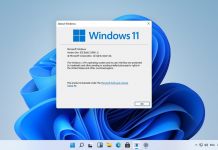At least, that is what Microsoft is suggesting. The company insists Windows 11 does warrant the new rebranding and is not simply a re-designed Windows 10. Microsoft talks about security improvements, but also says the OS was created with a focus on accessibility. With over one billion Windows users, Microsoft says crossing the “disability divide” is important. Windows 11 will become the most accessible version of the OS the company has ever made: “Accessible technology is a fundamental building block that can unlock opportunities in every part of society. A more accessible Windows experience has the power to help tackle the “disability divide” — to contribute to more education and employment opportunities for people with disabilities across the world.” Of course, Windows 11 retains many of the assistive tools found on Windows 10. So, there are services and apps like Windows Speech Recognition, Narrator, Closed Captions, and Magnifier. The platform also allows developers to build third-party technologies.
New Tools
Part of the new soundscape Microsoft has created for Windows 11 are assistive audio for blind people. For example, the new start up sound. Microsoft points out the customized themes, including dark mode, also help viewing experiences for impaired users. However, I am unsure if this is not reusing the redesign and spinning it as a positive. For deaf users, the Closed Captions service is updated, while mobility impaired people can use Windows Voice Typing and speech transcription, two Microsoft AI services. Microsoft also explains how Windows 11 accessibility simply works across more scenarios: “With Windows 10, we made it possible for assistive technologies to work with secure applications, like Word, in Windows Defender Application Guard (WDAG). With Windows 11, we made it possible for both Microsoft and partner assistive technologies to work with applications like Outlook hosted in the cloud, in Azure Virtual Desktop (AVD). For example, with Windows 11, Office is accessible as a Remote Application Integrated Locally (RAIL) using Narrator. Windows 11 will also support Linux GUI apps like gedit through the Windows Subsystem for Linux (WSL) on devices that meet the app system requirements.” It is also worth noting the “Ease of Access” sections of the Settings app has become simply “Accessibility” in Windows 11. Tip of the day: Whether you’re planning an upgrade, tuning CPU timings, or just curious, it’s handy to know information about your RAM. In our tutorial, we show you how to check RAM speed, type, and size using several built-in Windows 10 tools




